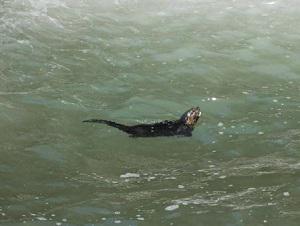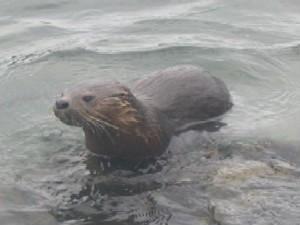Gonzalo Medina Vogel
Other projects
4 Dec 2006
Metapopulation Dynamics and Estimation of Population Size of Marine Otter (Lontra felina) Using Molecular Markers in Chile
A long term study about the ecology and conservation threats of marine otters and their ecosystem.

Marine otters live along the Pacific from 6ºS to 56ºS. Is considered Endangered by the IUCN. In the seashore of central Chile a research began in May 2004 partially funded by the Universidad Nacional Andrés Bello. During one year otters will be radio-tagged. Home range, activity, use of the aquatic and terrestrial habitat, prey diversity, use and availability of refugees and human activity will be assessed. In Chile, a discussion has begun among biologists, environmentalists and the Department of State regarding the implementation of marine reserves and parks. Due to its habitat requirements, the marine otter could be an important indicator species for reserve and parks design, as it needs good quality marine and terrestrial habitats.

This research is the second phase of a long term study about the ecology and conservation threats of marine otters and their ecosystem that began in 2000. Which results are already been published (Marine Mammal Science 20: 134-144) or under review in other prestigious journals. Now this project will apply radio-tagging technology to assess how human differential use of the terrestrial space and exploitation of crabs and fish, together with variations in environmental factors affect the spatial, feeding and social behaviour of otters. This is the first radio-tracking research with marine otters in history.
This project will result in increased knowledge about habitat requirements and conservation threats of the marine otter and its habitat, five undergraduate students are been benefit and two to three articles will be published. Also we will distribute our reports and publications to Department of State, NGOs and fisherman communities to support marine reserve and park designs.